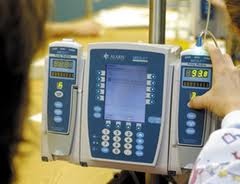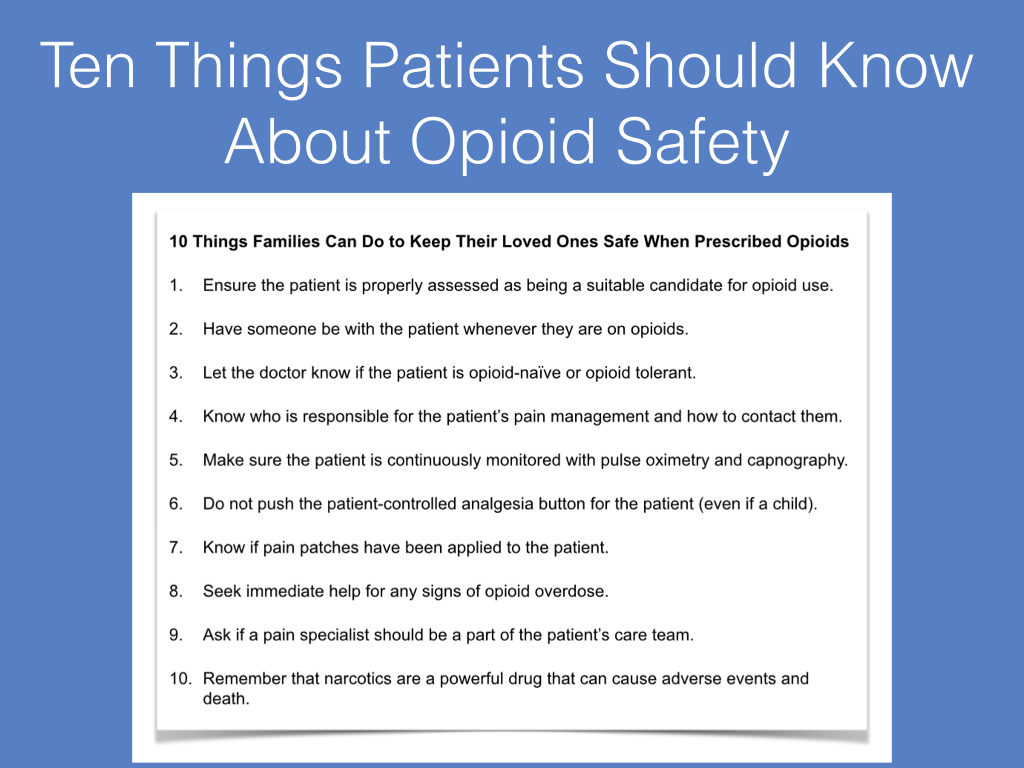How To Set Up A Pca Pump
by Pat Iyer, president of www.avoidmedicalerrors.com

Patient Controlled Analgesia (PCA) pumps were developed to address the problem of undermedication. They are used to let the patient to cocky-administer small doses of narcotics (usually Morphine, Dilaudid, Demerol, or Fentanyl) into the blood or spinal fluid at frequent intervals. PCA pumps are unremarkably used subsequently surgery to provide a more effective method of pain control than periodic injections of narcotics. This method of pain control has been found to consequence in less hurting and earlier belch from the hospital. PCA pumps can be effectively used by children every bit young as six years old. A continuous infusion (called a basal charge per unit) of i-two mg/hr permits the patient to receive a continuous infusion of pain medication. This manner of delivery is now used only for patients who have had prior opioid use or are non "opioid naïve". The risk of respiratory depression is too great in patients who have not built up a tolerance to opioids. Typically the patient receives an intravenous "loading" dose to chop-chop heighten the blood level of the hurting medication.
Depending on how the physician orders the medication, doses of narcotics may exist given in improver to or instead of a continuously running infusion of narcotics. These additional doses given on demand are usually limited to 1 mg of the narcotic in the pump. The pump is programmed to limit the number of additional doses that the patient can receive, and then as to not exceed rubber hourly limits of the narcotic. New pumps have touch screens and bar coding, which tin can be used to runway hurting medications as they leave the pharmacy, but also to place the patient who receives the medication and the nurse who puts information technology in the pump. A handheld computer tin exist used to collect information from the patient's identification band and the pump. Infrared applied science allows the data to exist wirelessly downloaded to a primal station where pain assessment and medication tin be monitored.

Morphine is the nearly common medication used with PCA pumps although Demerol is occasionally used. Its onset and duration are similar to Morphine. Fentanyl has a rapid onset but a shorter duration than Demerol or Morphine. Administration of narcotics through an epidural catheter usually involves a combination of narcotic (Fentanyl, Morphine, or Dilaudid) mixed with depression doses of a local anesthetic (Lidocaine, Bupivacaine, or Ropivacaine) without epinephrine. Side effects of the anesthetics include sensory and motor deficits, low blood pressure, and urinary memory.
Concerns have been identified in the final few years about the hazards of PCA by proxy, that is allowing nurses and family members to activate the PCA pump on behalf of the patient. Overdoses of medication have occurred due to this exercise, which is now being discouraged. Careful PCA pump programming and patient selection, as well as vigilant monitoring for the patient's responses to medication are essential to provide a safety commitment of pain relief. In that location take been tragic instances of overdoses delivered through PCA pumps, resulting in respiratory abort and brain harm. Continuous electronic monitoring using a pulse oximeter and a capnography machine discover drops in oxygen and increases in carbon dioxide, thus alerting clinicians to the risks of respiratory depression.
A PCEA (patient controlled epidural analgesia) pump delivers hurting medication into the patient's epidural space. Dilaudid, Morphine, or Fentanyl is used along with a local anesthetic such as bupivacaine or ropivacaine. The epidural method of pain medication administration should be washed but by clinicians skilled in its use and when careful monitoring of the patient can be provided.

Patricia Iyer extracted this data from her chapter on Hurting and Suffering in the 4th edition of Nursing Malpractice, Lawyers and Judges Publishing Company, 2022. Pat edited this book along with Barbara Levin, Kathleen Ashton and Victoria Powell. She is the president of www.avoidmedicalerrors.com, which offers a free digital monthly magazine, Avoid Medical Errors Magazine.
Source: https://ppahs.org/2012/05/patient-controlled-analgesia-pca-pumps-the-basics/

0 Response to "How To Set Up A Pca Pump"
Post a Comment